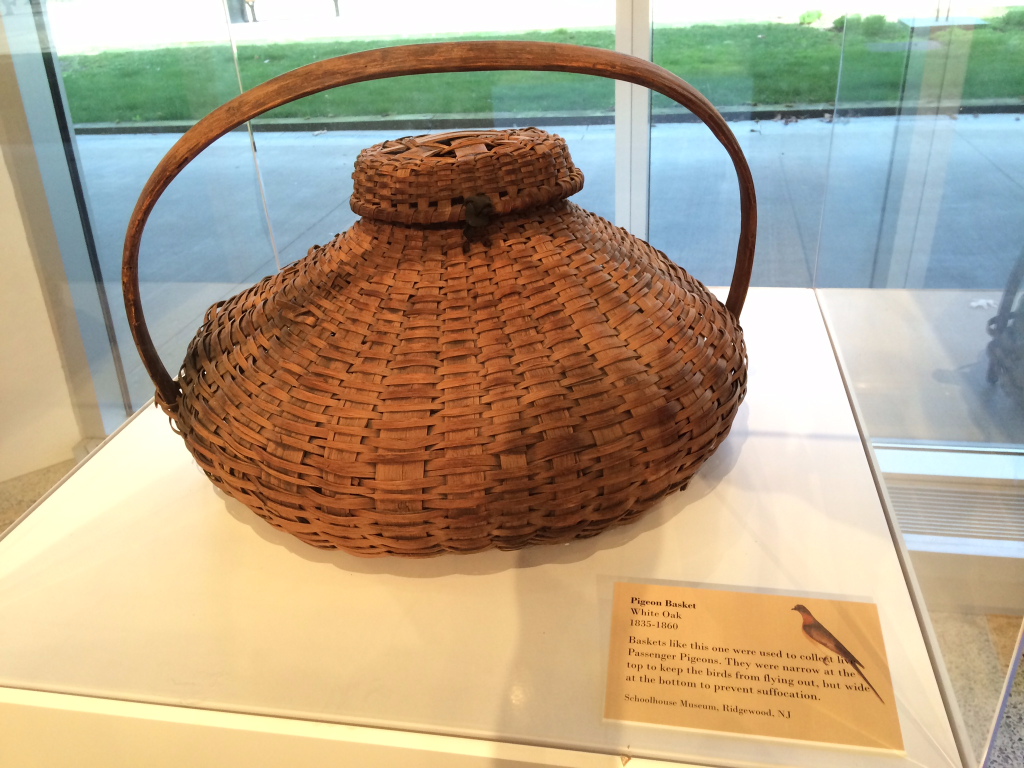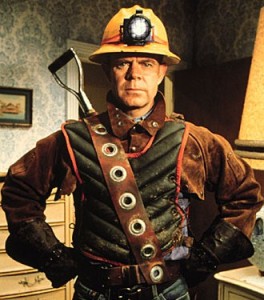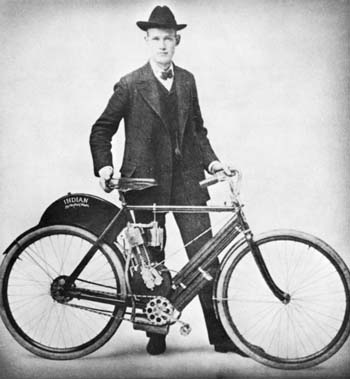
And the least cool thing is the astronaut.
You begin to interest me…vaguely

And the least cool thing is the astronaut.
“Mrs. Peel, we’re needed.” Actor Patrick Macnee, best known for his long running role as the very British secret agent John Steed, has passed away at the age of 93.

A group called TIGHAR has spent over 25 years not finding evidence of aviator Amelia Earhart on the tiny Pacific island of Nikumaroro. Earhart and her navigator, Fred Noonan, disappeared in 1937. In 1940, several human bones were found on this island by members of a British colony established on the island about a year after Earhart’s disappearance. With the idea that they might be the remains of Earhart or Noonan, several people examined them, concluding they were from a male shorter than both of the aviators.
Several years ago, two physical anthropologists, an archaeologist, and the head of TIGHAR published a re-evaluation of human bones found on the island (Burns et al. 1998). The actual bones went missing many years ago, so they relied on the original documentation, including a report by Dr. David W. Hoodless. The TIGHAR group concluded that, rather than being from a 45-55 year old, European or mixed European male about 5 foot 51/2 inches tall with a stocky build, as Hoodless concluded, they wereinstead consistent with Amelia Earhart, a 39 year old, tall, slender female.
Now, Pamela J. Cross and Richard Wright have re-examined that re-examination in a paper published in Journal of Archaeological Science: Reports. To put it succinctly, they found no reason to question Hoodless’s original interpretation, and no support for the idea that the remains might be from Earhart. Notably, they also point out the unfair and unwarranted attempt by Burns and colleagues to cast aspersions on Hoodless’s competence as a doctor. The article is worth reading in full.
It’s nice that TIGHAR has made their article and many other documents related to the Earhart and Noonan disappearance freely available on their website. The paper by Cross and Wright is also free to download (for a limited time?) at Elsevier.
References:
Burns, K.R., Jantz, R.L., King, T.F., Gillespie, R.E.
1998 Amelia Earhart’s bones and shoes? Current anthropological perspectives on an historical mystery. Paper presented at the American Anthropological Association Annual Convention, 5 December 1998 14(2). The International Group for Historic Aircraft Recovery (TIGHAR), 1998, Philadelphia, PA, USA, pp. 4–11.
Cross, Pamela J., and Richard Wright
2015 The Nikumaroro bones identification controversy: First-hand examination versus evaluation by proxy — Amelia Earhart found or still missing? Journal of Archaeological Science: Reports 3:52-59.
Based on ethnohistoric research, Harold Hickerson argued that deer were more abundant in the buffer zone between the territories of two warring tribes (Sioux and Chippewa) in the Upper Midwest than in either tribe’s home territory. Hunters were wary of entering the buffer zone (but did not completely avoid them) because of the risk of running into their enemies. Once conflict between the two tribes ended, deer hunting resumed in the buffer zone, leading to a decrease in deer populations.
Hickerson, Harold
1965 The Virginia Deer and Intertribal Buffer Zones in the Upper Mississippi Valley. In Man, Cultures, and Animals: The Role of Animals in Human Ecological Adjustments, edited by Anthony Leeds and Andrew P. Vayda, pp. 43–65. Publication No. 78. American Association for the Advancement of Science, Washington, D.C.
A more recent series of articles debated whether the buffer zone concept applied to Native Americans and animal populations in the western United States encountered by Lewis and Clark in the early 1800s. Click on the links for pdfs of these articles.
Martin, Paul, and Christine Szuter
1999 War zones and game sinks in Lewis and Clark’s West. Conservation Biology 13(1):36-45.
Lyman, R. Lee, and Steve Wolverton
2002 The Late Prehistoric–Early Historic Game Sink in the Northwestern United States. Conservation Biology 16(1):73-85.
Laliberte, Andrea S., and William J. Ripple
2003 Wildlife Encounters by Lewis and Clark: A Spatial Analysis of Interactions between Native Americans and Wildlife. BioScience 53(10):994-1003.

This mid-nineteenth century basket, on display as part of the passenger pigeon exhibit at the New Jersey State Museum, is on loan from the Schoolhouse Museum in Ridgewood, NJ. It is similar to a stool pigeon basket shown in French’s The Passenger Pigeon in Pennsylvania.

If a shovel is your pick, here’s your pick. The Sweethome [edit: now it’s part of the Wirecutter] takes reviews seriously, and they lay out their background research, testing methods, and justification for their rankings clearly. Just published is their review of round point shovels by Tim Heffernan.
Definitely read the original article for details, but the clear winner is from Bully Tools, a red-handled shovel with a 14-gauge blade weighing in at a svelte 4 pounds, 6 ounces.
You may have relied on a Razor-Back shovel, but they (model 2593600) get dinged for an unfriendly seam on the socket of the blade. Several other brands are also evaluated, all of them at least a step up (in quality and price) from the least expensive shovels so common in hardware stores and Home Depots.
For special occasions (i.e., rock, slag, tree roots) The Corona AS90300 gets the nod. It’s all-steel construction means it weighs almost twice as much as the Bully and costs three times as much. A more budget-friendly option is the heavy duty Razor-Back 45020, which has a solid steel shank that should be effective at levering your way through rocky soil or chunking out hardpan at one-third the price of the Corona.

Why does the American Swedish Historical Museum have an exhibit on Indian motorcycles? Because one of the founders of the Indian Motorcycle Company, Carl Oscar Hedstrom, was an immigrant from Sweden. The museum, located in Philadelphia, has several motorcycles and other artifacts on display. While there, you can also pick up some herring and lingonberry preserves at the gift shop.


Journal of Archaeological Science: Reports Special Issue Call for Papers: Turkey Husbandry and Domestication: Recent Advances
The turkey (Meleagris gallopavo) is the only domesticated vertebrate to originate from North America. Its history of use and domestication is therefore of great importance to understanding the process, timing, practice and spread of New World animal husbandry. This special issue therefore brings together recent research papers that advance our understanding of turkey use and domestication through inter-disciplinary work involving skeletal morphology, paleopathology, osteometry, stable isotopes, and DNA analysis. We seek papers that span the entire history of turkey use and domestication from their earliest appearance in the archaeological record to their colonial period diffusion outside the Americas. Geographic coverage is sought from all areas of the species historic range including Mesoamerica, the American Southwest, and Eastern North America to generate more dialogue among researchers independently studying the topic in these cultural regions. Evidence documenting turkey transport outside the Americas is also relevant to this topic. Papers that demonstrate advances in inter-disciplinary and scientific approaches to studying turkey use and domestication are particularly welcomed.
Schedule:
First draft of manuscripts due: August 1, 2015
Notification of Acceptance/Revisions: Sept. 2015 (anticipated)
Final paper production deadline: Nov/Dec. 2016 (anticipated)
Expected Publication date: Spring 2016
Submission Guidelines:
Submissions to the Journal of Archaeological Science: Reports are made on-line using through the Elsevier Publishing system. Through the on-line system, you will be able to submit your manuscript directly to the special issue. Registration, on-line submission login, and author guidelines are available at http://www.journals.elsevier.com/journal-of-archaeological-science-reports/.
Optional open access publishing (on a per article basis) will be available for this special issue.
All submitted papers will be subject to regular peer-review procedures. Papers should not typically exceed 5000 words (excluding tables and references) and should not have been published previously nor be currently under consideration for publication elsewhere in any other format (print or electronic).
Please contact the lead guest editor, Erin Thornton (erin.thornton@wsu.edu), for additional information.
Assembled by Clara Darko.
Almost a half century of the The Bulletin, the Journal of the New York State Archaeological Association, is now available online. Volume 1, published in 1954, to 1999’s Volume 115 can be downloaded for free at NYSAA’s site. While visiting their site, see if you can spot the photo of Harrison Follett’s camp at Lamoka Lake.